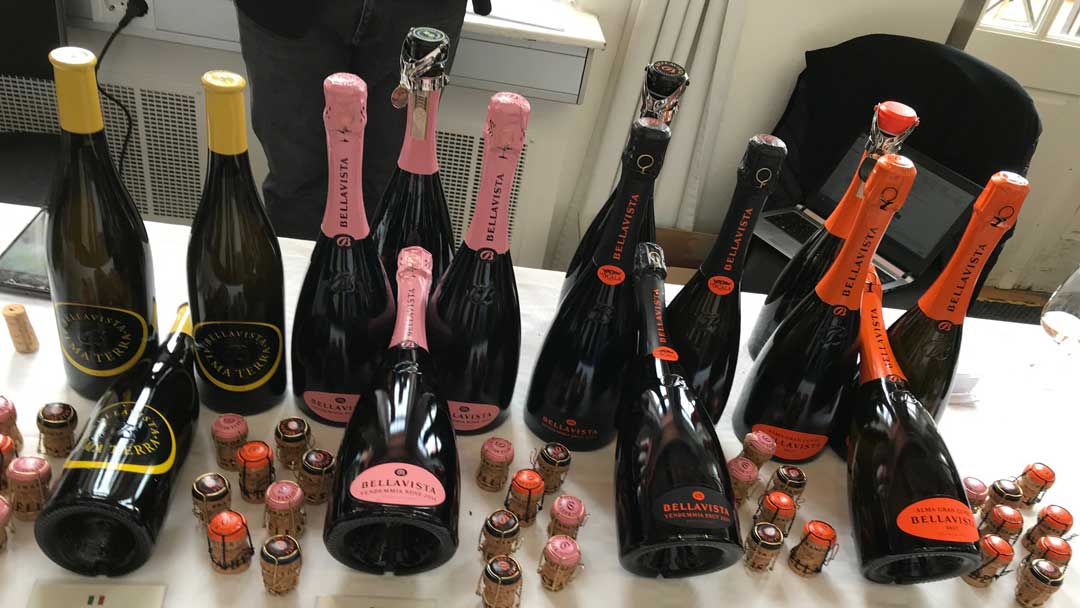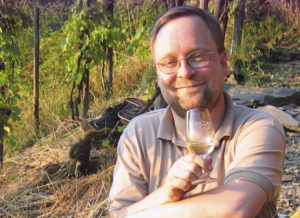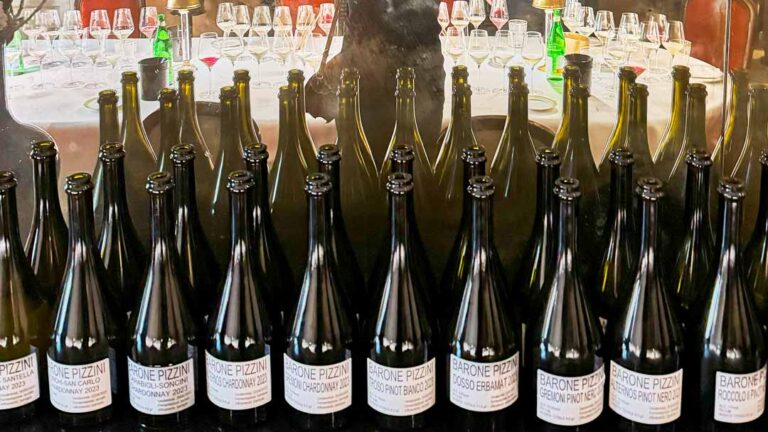Each wine region has its own character. The same thing goes for sparkling wines. Franciacorta is considered by many to be one of the best bubbly wines from Italy. The grape composition in Franciacorta means that it is often compared to champagne, not seldom to Franciacorta’s advantage. One of the many exciting producers there is Bellavista. BKWine Magazine’s reporter Tomas Eriksson has tasted a selection of their wines.
Sparkling wines are produced in many parts of Italy, but the most reputable Italian quality bubbles come from the Franciacorta area in Lombardy in northern Italy.
According to the DOCG rules, franciacorta must have the second fermentation in bottle, just like champagne. Versions without vintage must be aged for at least 18 months on the lees in bottle and 25 months in bottle in total. Vintage bubbly may only be sold after 37 months.
[Ed: As a comparison: Champagne must have at least 12 months on the lees, all versions. A non-vintage champagne must have a total of 15 months in bottle (including the time on the lees); a vintage champagne must have at least 36 months in bottle (including a minimum of 12 on the lees).]
The permitted grape varieties are chardonnay, pinot nero, pinot bianco (max 50%) and the unusual erbamat (max 10%). Rosé versions must contain at least 35% pinot nero and the colour must come from pinot nero vinified with the saigné method. It is thus not allowed to add red wine. Franciacorta with the additional designation satèn, which means satin, may only contain chardonnay and pinot bianco and has lower pressure, max 5 atmospheres.

In the vineyards there is about 80% chardonnay, so it is relatively unusual to see franciacorta with any other grape variety dominating, with the exception of rosés. The second most common variety is pinot nero with 15% and pinot bianco has 5%. They also make still wines under the designation curtefranca.
Most sparkling wines with quality ambitions are compared to champagne, whether they like it or not. Franciacorta tends to be one of the most “champagne-like” sparkling wines from Italy. Other Italian bubbles that are similar in style usually also come from the northern part of the country.
Bellavista is one of the larger producers in Franciacorta, with 198 hectares of vineyards and a production of 1.4 million bottles. They are also undoubtedly a quality producer. The company was founded in 1977 by Vittorio Moretti and got its name from the hill where the first vineyards are located. In 1981 Mattia Vezzola became winemaker. In 2007, he was named winemaker-of-the-year by the Italian wine guide Gambero Rosso.
In connection with the Senses Wine Fair, Carovin, their importer, offered the opportunity to taste the Bellavista wines imported to Sweden, which is a selection of their range.
Alma Terra 2016, Bellavista, Curtefranca
~27 euro (approximate prices based on Swedish retail)
A still wine, so a curtefranca, from 100% chardonnay. Small oak barrels are used in the production for 5-6 years so that they have used oak barrels for the sparkling wines.
A nose of ripe apples and pears, some tropical fruit, yellow plums and some typical oak character. Medium-bodied taste with pears, minerality and good acidity. Young, 88 p.
A typical barrel-aged chardonnay of good quality and good balance, possibly a little more fruit-driven and “warmer” than a typical burgundy.
Alma Gran Cuvée Brut, Bellavista, Franciacorta
~33 euro
A non-vintage franciacorta of from 77% chardonnay, 22% pinot nero and 1% pinot bianco. 35% of the base wine is aged in old oak barrels.
Fragrance of ripe apples, some flowers, bread and brioche, minerals and slightly smoky. The flavour is fruity with minerality and has notes of apple and some citrus with some hints of grapefruit and good acidity. 87-88 p.
Compared to a typical champagne with the same grape composition, I would say that this wine is a little more fruity.
Note: this wine was called Bellavista Cuvée but on the label the name is now Alma Gran Cuvée.
La Scala Brut 2011, Bellavista, Franciacorta
~43 euro
68% chardonnay and 32% pinot nero with elements of oak barrels in the vinification, degorged 2016.
Nose with ripe apples and fried apples, spices and barrel notes, minerality. The fragrance is pleasant but gives a “leaner” impression than the one without vintage. The taste is fruity with good concentration and clear spiciness, minerality and good acidity. A sparkling wine in a food-oriented style, 89-90 p.
La Scala is a step up compared to the non-vintage Alma and is above all a bit heavier and more full-bodied. I think it’s easier to confuse La Scala with a champagne, if you think this is the most important thing for a bubbly.
Rosé Brut 2014, Bellavista, Franciacorta
48 euro
65% chardonnay and 35% pinot nero which has been vinified to pink.
Quite fruity nose of red apples, red berries, a little spicy, mineral and a light touch of mature pinot with forest undergrowth etc. Taste with red and green apples, minerality, undoubtedly good acidity, fresh style. An elegant bubbly rosé, 89 p.
The rosé is in a fresher and slightly lighter style than La Scala and has a younger style, which may not be surprising as it is actually three years younger. Also the rosé is easy to mistake for a champagne.
In my opinion, Bellavista has a solid range of wines and their vintage bubbly – both the white and rosé versions – stands well against champagne.
Tomas Eriksson is one of the contributors on BKWine Magazine. He is active in the wine tasting association AuZone in Stockholm and in Munskänkarna, where he sometimes holds wine courses. Tomas also runs a blog called Vintomas.
[box type=”info” style=”rounded” border=”full”]
“Bubbles in Italy” has previously been on BKWine’s wine tour program but is not so currently. Instead, there are other exciting wine tours in Italy, certainly with some bubbly if you want. Or, if you want, you can compare it with…. a wine tour to Champagne.
Travel to the world’s wine countries with the wine experts and the wine travel specialist.
More sparkling and bubbly wine tours. BKWine wine tours.
[/box]










